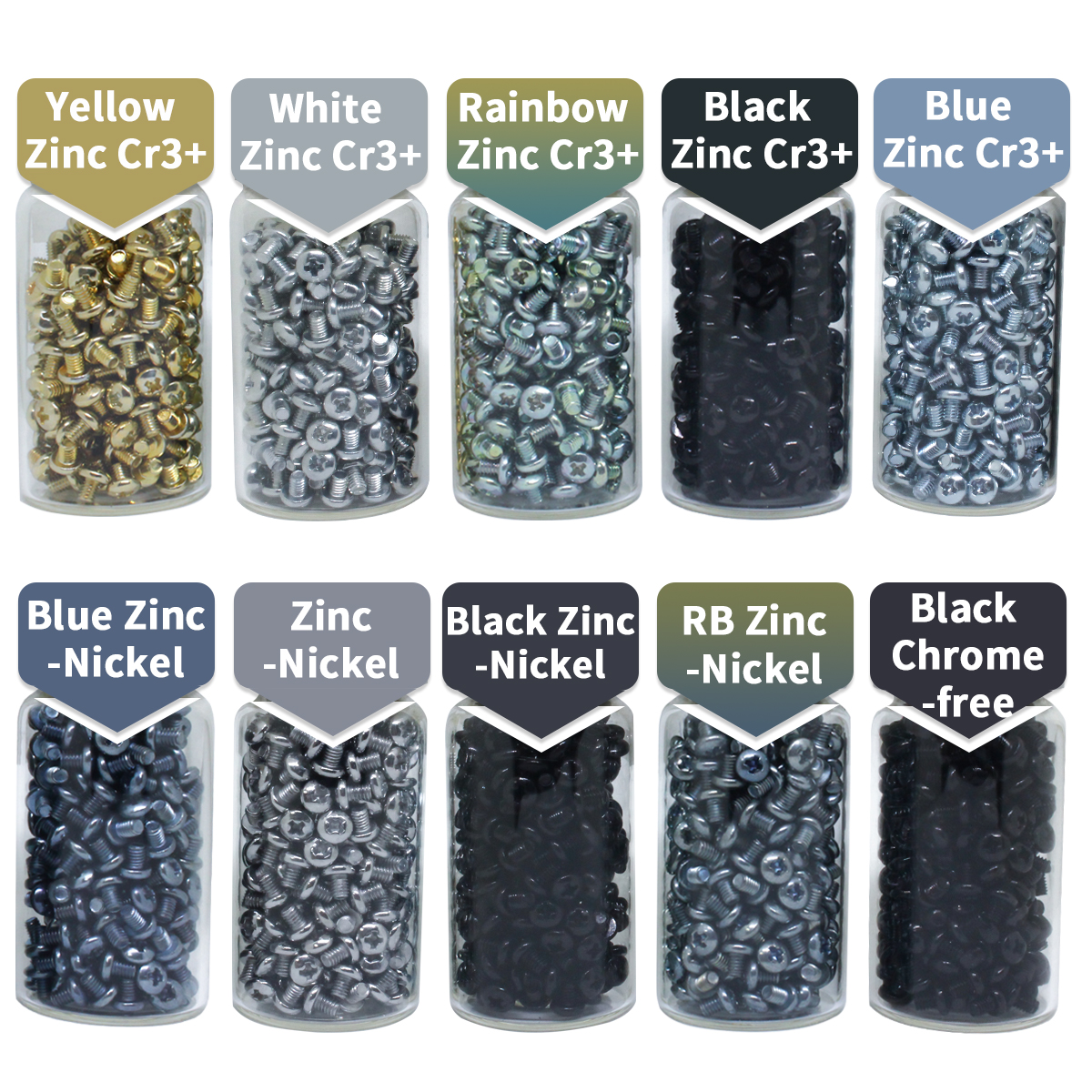Common Surface Treatments in the industry:

What is Hexavalent zinc plating(Cr6+)?
Hexavalent zinc plating is a technique used to apply a protective zinc coating onto metal parts by immersing them in a solution of zinc and chromium ions and passing an electrical current through the solution. This process creates a durable and corrosion-resistant coating. However, the use of hexavalent chromium in this process is known to be harmful to human health and the environment.
What is Trivalent zinc plating(Cr3+)?
Trivalent zinc plating is a process for coating metal parts with a protective layer of zinc. The process uses a solution containing trivalent chromium, which is less toxic and harmful to the environment than hexavalent chromium. The resulting coating is still durable and resistant to corrosion, making trivalent zinc plating a more environmentally-friendly and safer alternative to hexavalent zinc plating.
All of Rainbow Hardware Company's zinc plating products are in compliance with ROHS and REACH standards except Hexavalent zinc plating products.
Types of zinc plating
- White Zinc Cr3+
- Blue Zinc Cr3+
- Yellow Zinc Cr3+
- Black Zinc Cr3+
- Rainbow Zinc Cr3+
- White Zinc Cr6+
- Blue Zinc Cr6+
- Yellow Zinc Cr6+
- Zinc-Nickel
- Black Zinc -Nickel
- Blue Zinc-Nickel
- Rainbow Zink-Nickel
- Zinc-iron
What is Black Oxide Plating?
Black oxide plating is a process that creates a thin layer of black iron oxide on metal parts. This layer provides both a decorative finish and protection against corrosion and wear. The process involves immersing the metal part in a heated solution containing various chemicals, which causes a chemical reaction to occur on the surface of the metal, forming the black oxide layer.
DACROMET/RUSPERT
DACROMET is a water-based coating that is applied to metal parts using a dip-spin process. The coating contains zinc and aluminum flakes, as well as other inorganic compounds, which provide excellent corrosion resistance and a long lifespan.
RUSPERT is a similar coating that contains a mixture of zinc and aluminum flakes, as well as other inorganic compounds, to provide superior corrosion resistance. It is applied using a spray or dip process and is often used in high-corrosion environments such as marine or coastal areas.